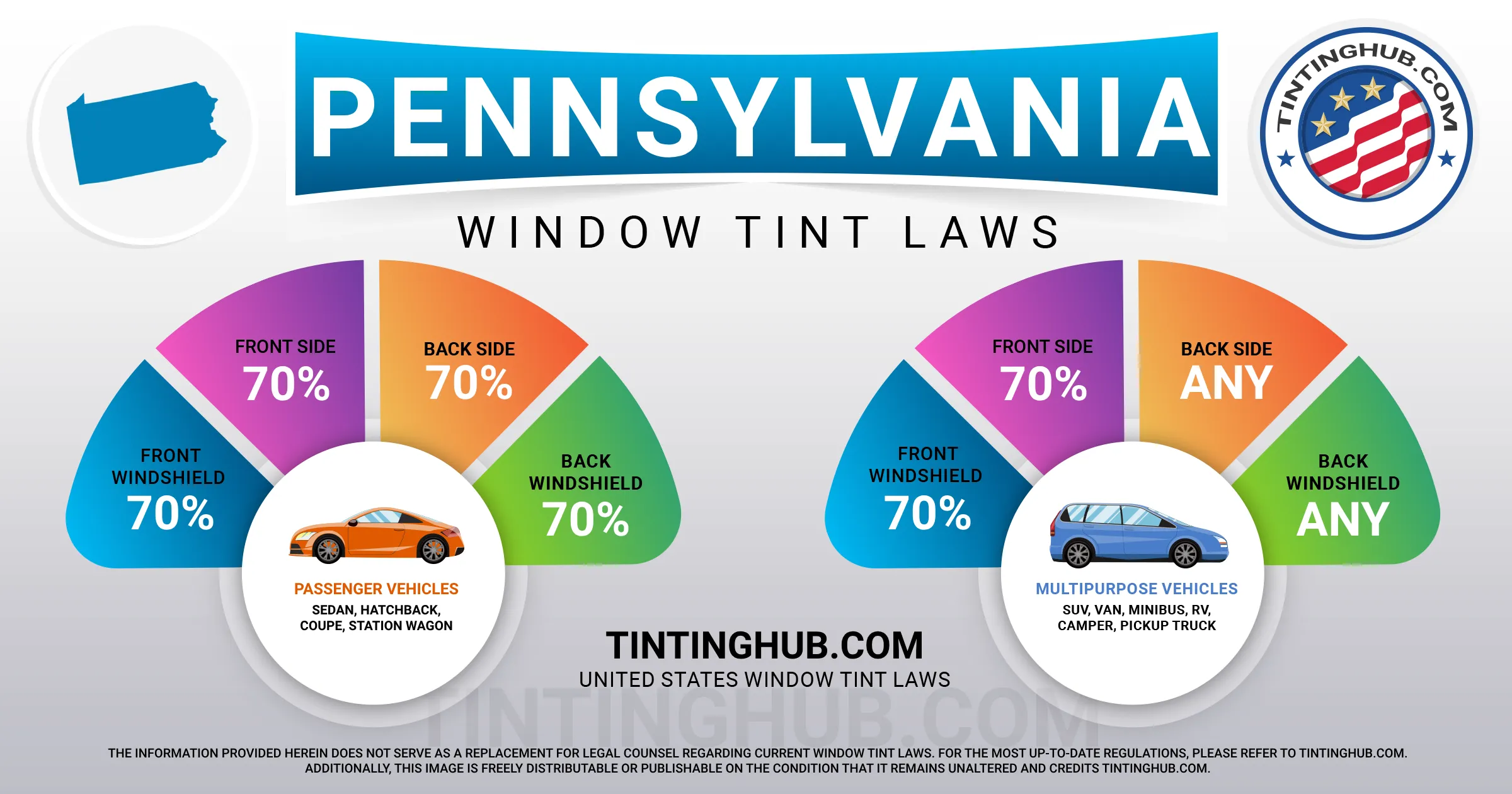Pennsylvania Window Tint Laws (Last Update 2024)

If you’re a car owner in Pennsylvania, it’s crucial to understand the window tinting laws that have been in place since 1999. In this article, we’ll provide you with all the essential information you need about your car’s window tint, including permissible darkness levels and reflectivity. So, let’s dive into the world of Pennsylvania’s window tinting regulations.

Understanding Window Tint Darkness
The darkness of your car’s window tint in Pennsylvania is measured by a metric known as VLT, or Visible Light Transmission. This metric determines the percentage of visible light that can pass through your windows. It’s important to note that the darkness requirements differ for sedans and SUVs or vans.
Tint Darkness for Sedans
- Windshield: Must allow more than 70% of light in, with no darkness on the top 3 inches.
- Front Side Windows: Must allow more than 70% of light in.
- Back Side Windows: Must allow more than 70% of light in.
- Rear Window: Must allow more than 70% of light in.
Tint Darkness for SUVs and Vans
- Windshield: Must allow more than 70% of light in, with no darkness on the top 3 inches.
- Front Side Windows: Must allow more than 70% of light in.
- Back Side Windows: Any level of darkness can be used.
- Rear Window: Any level of darkness can be used.
Window Tint Reflection Regulations
In addition to darkness levels, window tint can also affect how much light is reflected. The state of Pennsylvania has specific rules regarding window tint reflection, which help reduce glare and heat.
Tint Reflection for Sedans
- Front Side Windows: Mirrored or metallic appearances are not allowed.
- Back Side Windows: Mirrored or metallic appearances are not allowed.
Tint Reflection for SUVs and Vans
- Front Side Windows: Mirrored or metallic appearances are not allowed.
- Back Side Windows: Mirrored or metallic appearances are not allowed.
Other Important Pennsylvania Window Tint Rules and Regulations
Apart from darkness and reflection, Pennsylvania has several other significant regulations concerning window tinting. These include:
- Side Mirrors: If your rear window is tinted, dual side mirrors are required.
- Restricted Colors: Pennsylvania does not explicitly ban specific tint colors.
- Certificates: Film manufacturers are not obligated to certify the films they sell in Pennsylvania.
- Stickers: The state mandates the use of stickers to identify legal tinting.
- Medical Exceptions: Pennsylvania allows medical exemptions for special tint.
It’s worth noting that the interpretation of Pennsylvania’s tinting laws and regulations may vary depending on your county or place of residence. We always recommend double-checking our information with your local DMV or law enforcement authorities.
Our data on window tint laws in Pennsylvania is current as of 2023. If you ever find any inaccuracies in the information provided here, please don’t hesitate to contact us so we can ensure it’s corrected. Thank you for trusting us as your go-to source for accurate window tinting laws information in Pennsylvania.